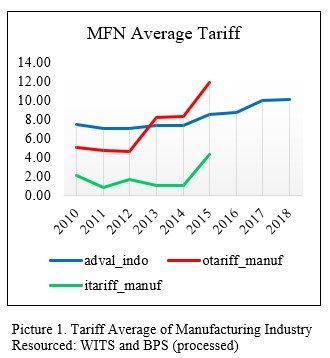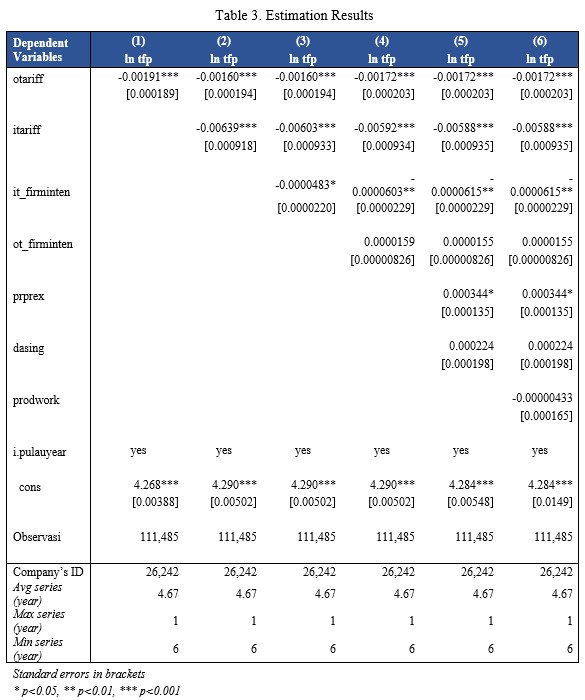Trade Liberalization and Productivity of Manufacturing Industry in Indonesia: The Role of Intermediate Input Import Intensity
Conference
64th ISI World Statistics Congress
Format: CPS Paper
Keywords: import, indonesia, industrial, officialstatistics, openness, productivity, selection bias, trade
Abstract
During the unprecedented crisis like Covid-19, the international trade policy tends to be more inward looking and shows stronger indication towards protectionism rather than cooperative spirit. Countries around the world are hesitate to open the border and share the resources in their domestic markets. This condition is more likely to happened for the next several years and it can not be ignored. As the world is more engaged but the paradigm is changing dynamically, it is critical to understand how international trade policy will affect the productivity of local manufacturing industries.
This study aims to analyze the role of intermediate input import intensity in the mechanism of how trade liberalization affect plant productivity using conceptual framework in Amiti & Konings (2007) then develop it using the model of Luong (2011). The estimation strategy used in this paper is Olley Pakes Methodology which accommodate the control for simultaneity problem and selection bias. The productivity in the previous year in this paper used to control the simultaneity problem while the selection bias is solved by control the company’s barrier to exit from market in two following years as in Indonesia the official statistic survey is done voluntarily so the company which not send back the questionnaire in following year can not be stated as exit from market immediately.
The international trade policy used in this paper is Most Favored Nation (MFN) Import Tariff constructed by using 10 digit HS code World Bank Data matched with Manufacturing Industry Intermediate Input Structure from Statistics Indonesia with total of 144,856 observations in 2010 – 2015. The import tariff is separated to output tariff and input tariff then interacted with intermediate input import intensity in 5 digit code disaggregation for each company. As robustness check, every result in this research is compared with Ordinary Least Square (OLS) to ensure that the simultaneity problem and selection bias is solved during the process.
The results confirm the mechanism explained by literatures that there is reduction of competition effect raised by liberalization in output market based on the company’s import intensity. This study also found that there was a decline in the productivity of manufacturing industry during the trade policy paradigm towards protectionism. By modifying United Nation Industrial Development Organization (UNIDO) categorization of Medium High & High Technology Industries combined with Medium Technology Industries, Low Technology Industries, and Resource-based Industries, the result shows that the most effective trade liberalization policy in Indonesia is in Low Technology Industries.
Figures/Tables
Picture 1 MFN Tariff

Table 1

Table 2

Table 3

Table 4

Table 5

